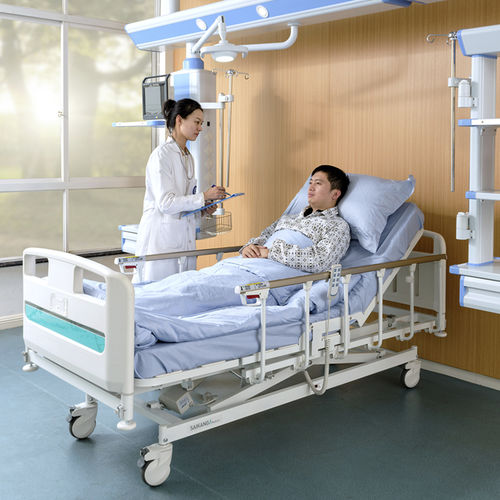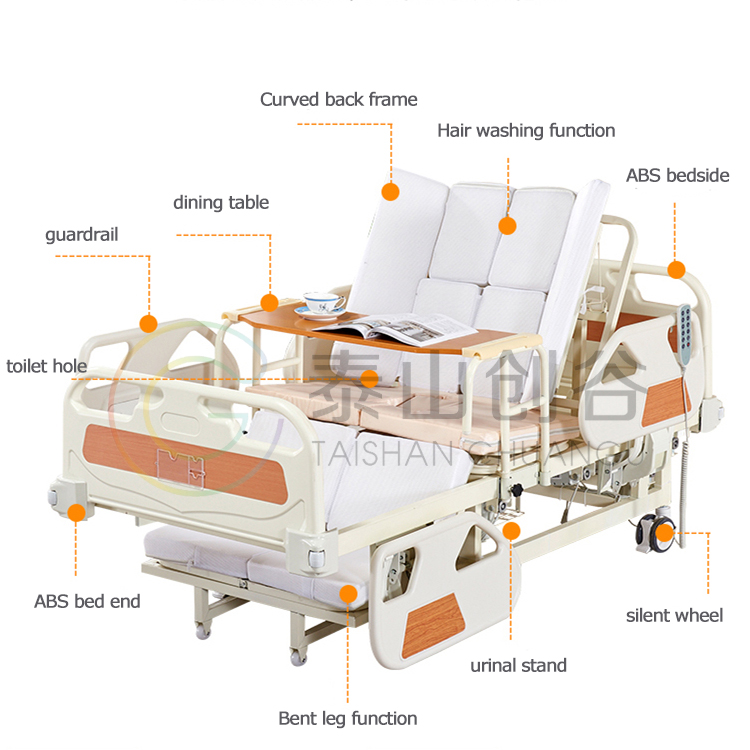Will there be electricity leakage?
Will it cause injury to patients or medical staff?
Can it still be cleaned after being powered on? Will it not comply with hygiene requirements?
…

There are a number of issues that many hospitals consider when deciding to upgrade their hospitals to electric hospital beds. The special industry requirements of the medical care industry determine that a medical or nursing electric bed is not a piece of furniture. Instead, an electric bed equipped with an electric actuator system is a piece of professional medical equipment that can help patients recover quickly, thereby increasing the hospital’s turnover rate.
Of course, producing an electric actuator system that meets or exceeds the expectations of the healthcare industry is no easy task.
There are solutions for several common potential risks of electric hospital beds.

Waterproof and fireproof
For electric systems, waterproofing and fireproofing are important safety factors. In medical devices, high hygiene requirements make easy and convenient washing a must.
Regarding fire protection requirements, we strictly control the raw materials when selecting electric actuator systems, and select high-quality and safe electrical appliances and safety components. At the same time, ensure that the raw materials pass fire protection tests.
In terms of waterproofing, it is not satisfied with meeting the IP waterproof level standard currently commonly used in the industry, but has launched its own high waterproof level standard. Electric actuator systems that meet this standard are designed to withstand years of repeated machine cleaning.
The risk of bed collapse refers to the accidental collapse of the electric hospital bed during use, which will cause serious injuries to patients and medical staff. Because of this, at the beginning of the design, all the electric actuators we selected adopted 2.5 times the rated load requirement, which means that the actual load-bearing limit of the electric actuator is 2.5 times higher than the rated load-bearing limit.
In addition to this heavy protection, the electric actuator also has a braking device and a safety nut to ensure that the electric hospital bed will not collapse accidentally. The braking device can lock the hub of the turbine in the braking direction to improve the self-locking ability; while the safety nut can bear the load and ensure that the push rod can descend safely and slowly when the main nut is damaged to prevent accidents.
personal injury
Any moving part of machinery carries the risk of accidental injury to personnel. Electric push rods with anti-pinch (Spline) function only provide push force but not pull force. This ensures that when the push rod retracts, the human body parts stuck between the moving parts will not be harmed.
Years of experience have allowed us to correctly understand what needs to be paid attention to when selecting materials and mechanical components. At the same time, continuous testing also ensures that these potential risks are minimized.
How is the product defect rate less than 0.04% achieved?
The requirement for product defective rate is less than 400PPM, that is to say, for every million products, there are less than 400 defective products, and the defective rate is less than 0.04%. Not only in the electric actuator industry, this is also a very good result in the manufacturing industry. The combination of production, global success and expertise ensures that our products and systems are safe and reliable.
In the future, electric actuator systems will continue to require higher standards for their products and systems to ensure their safety and reliability.
Post time: May-16-2024

